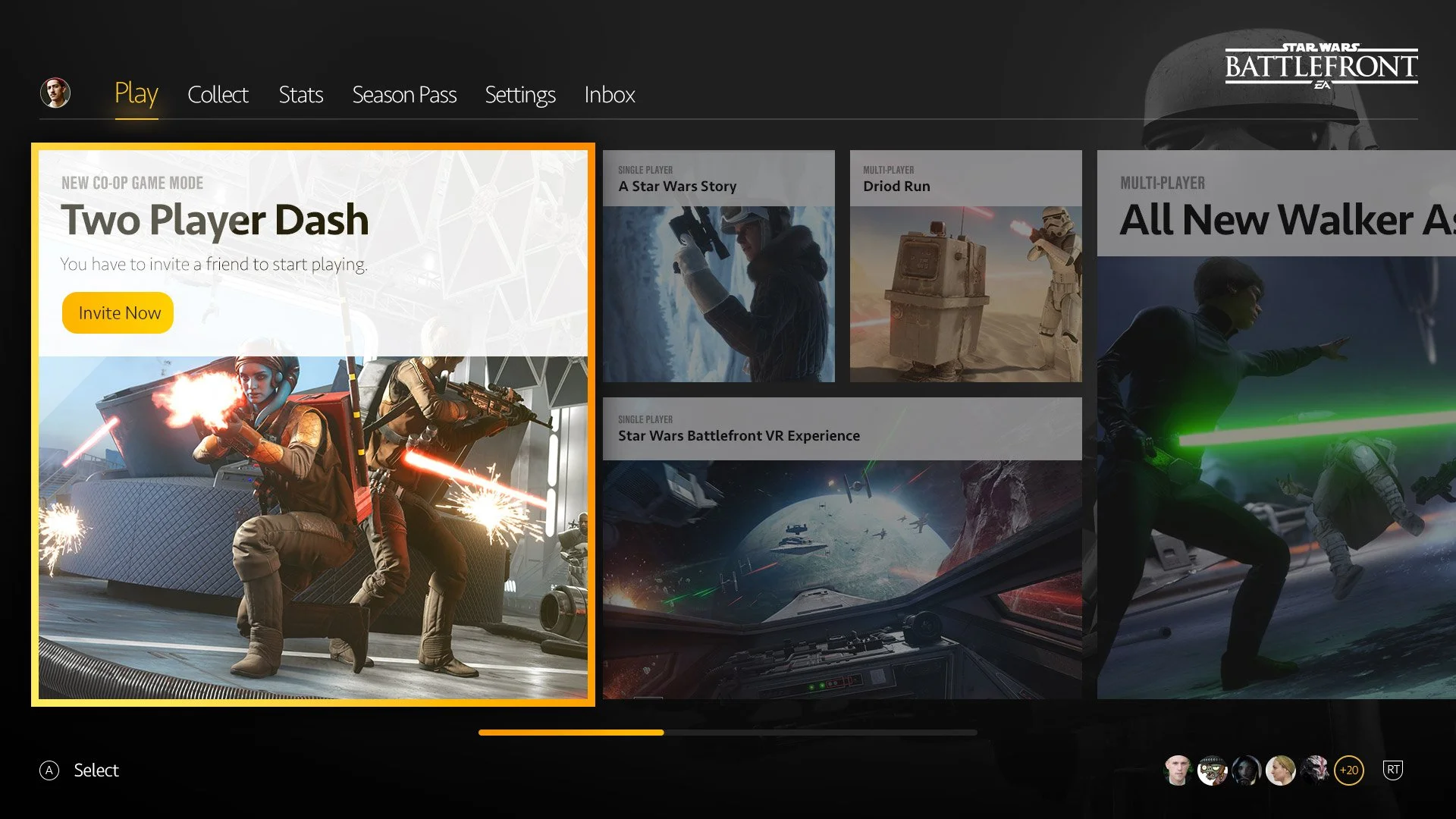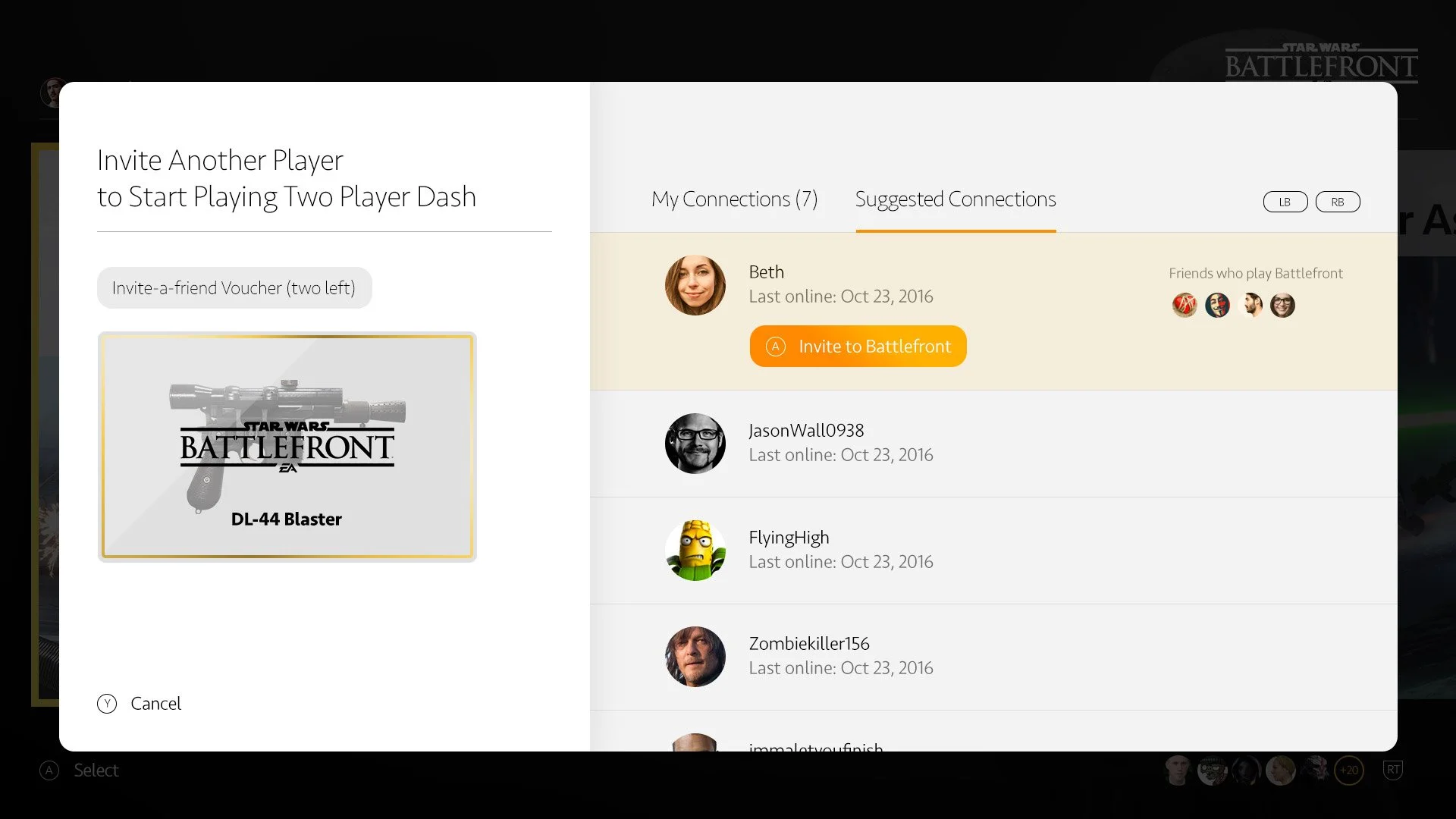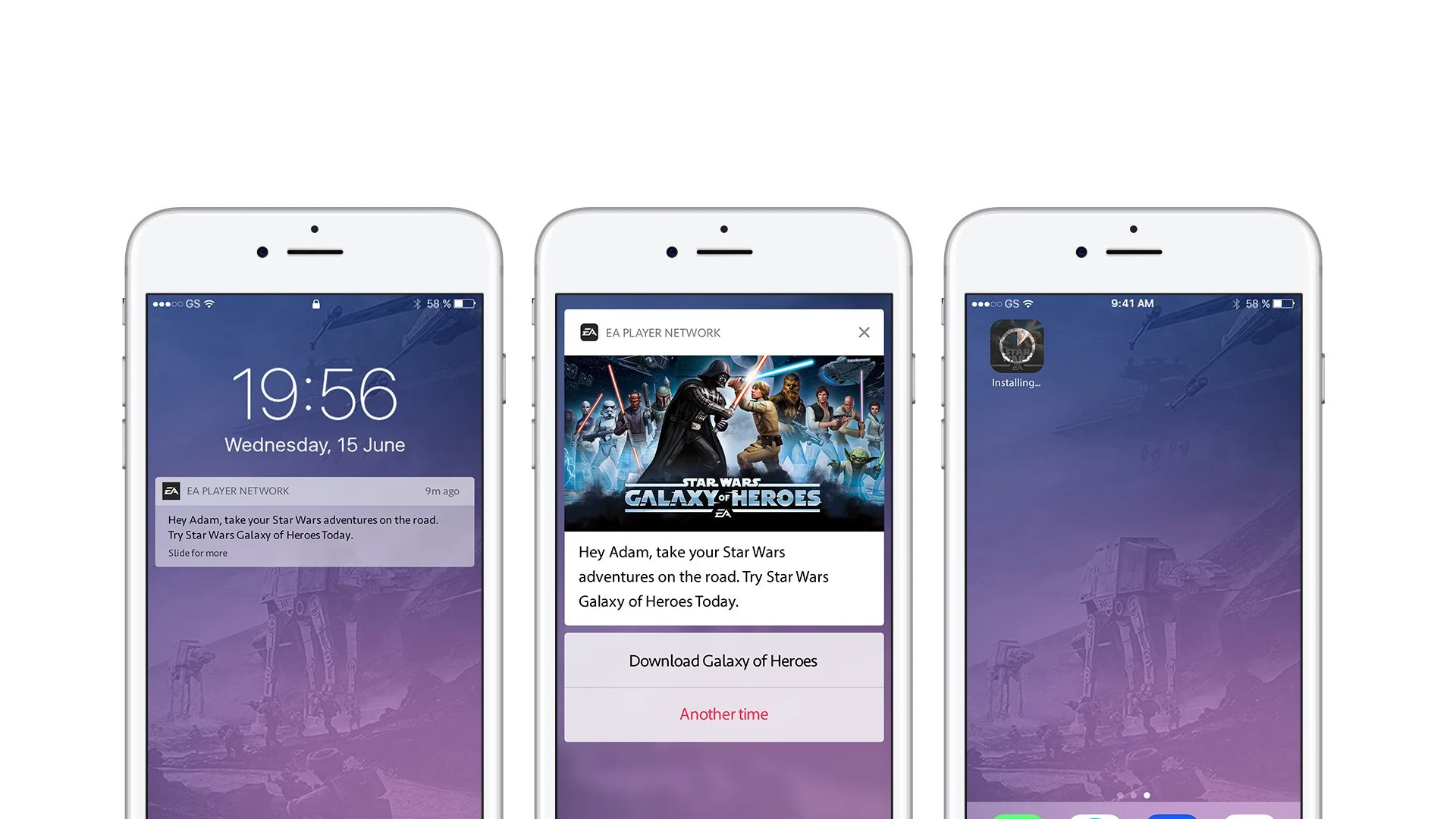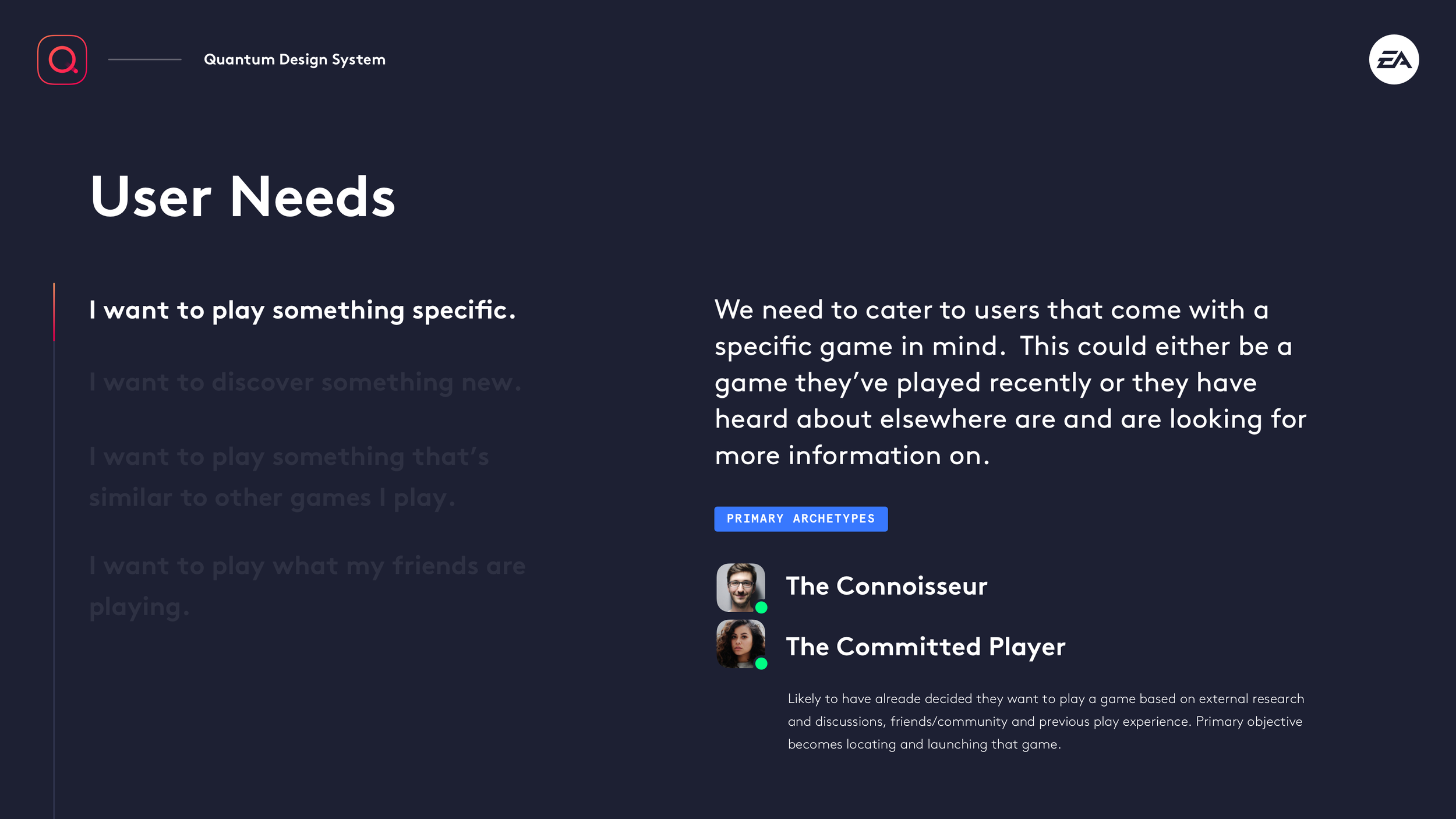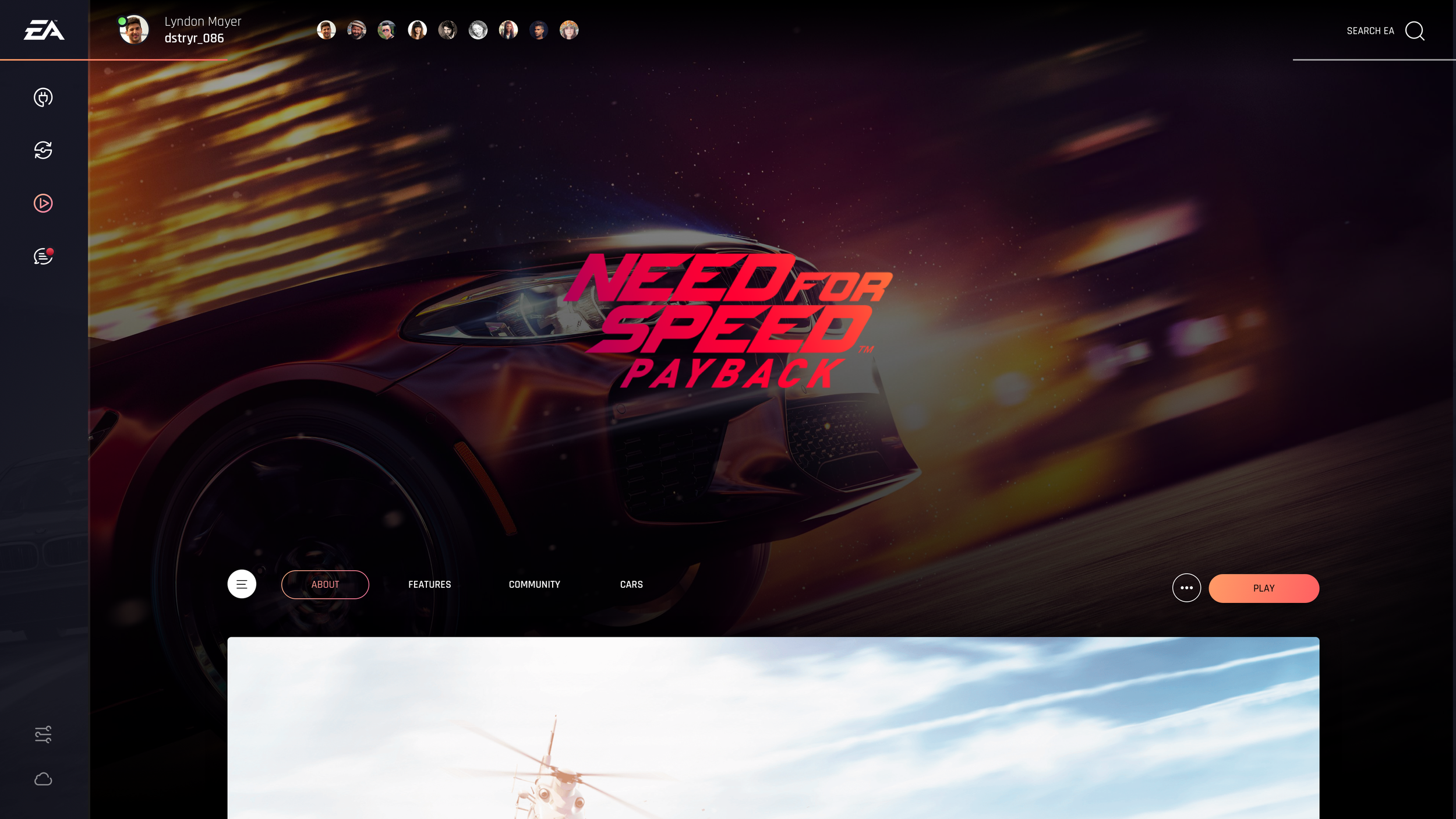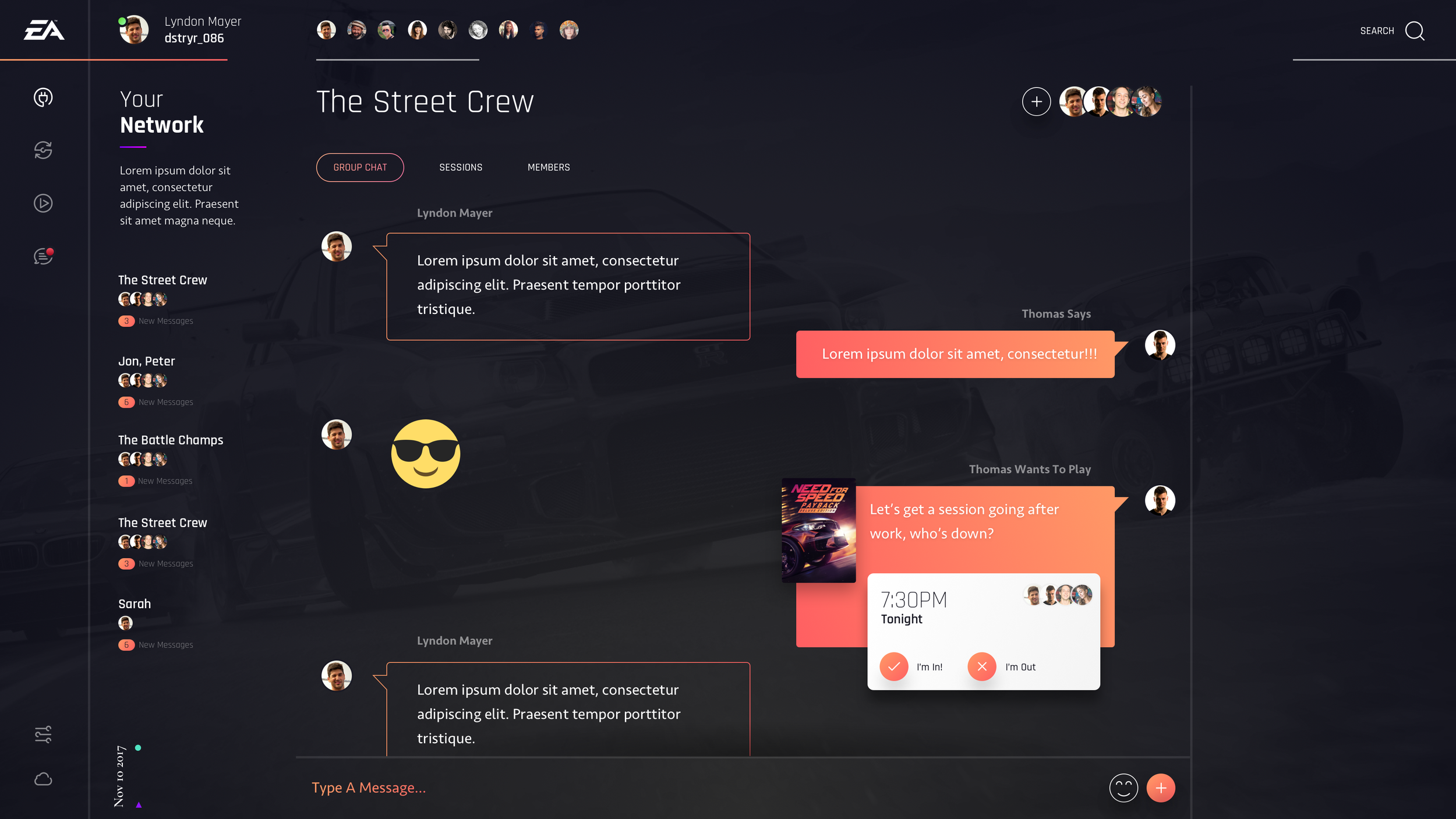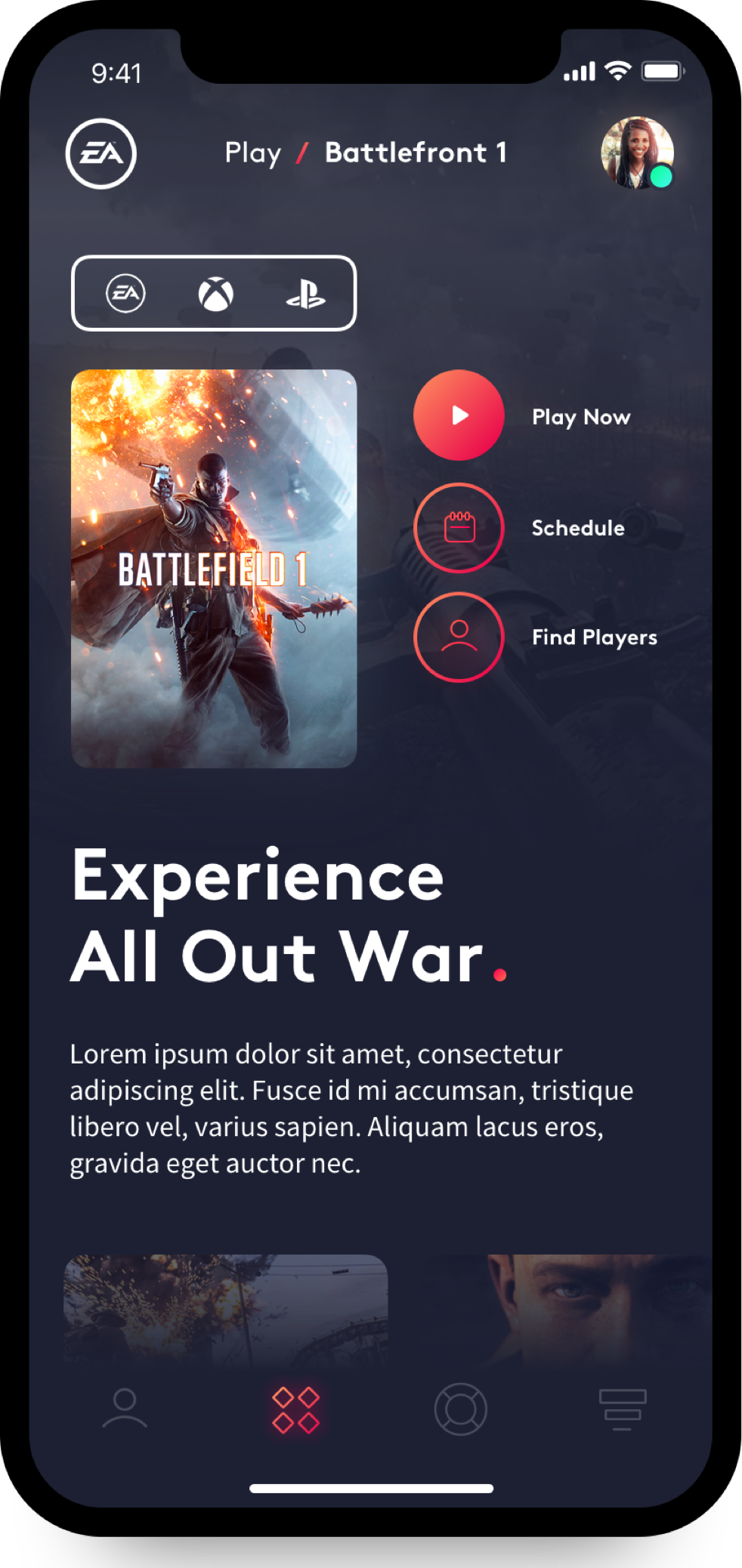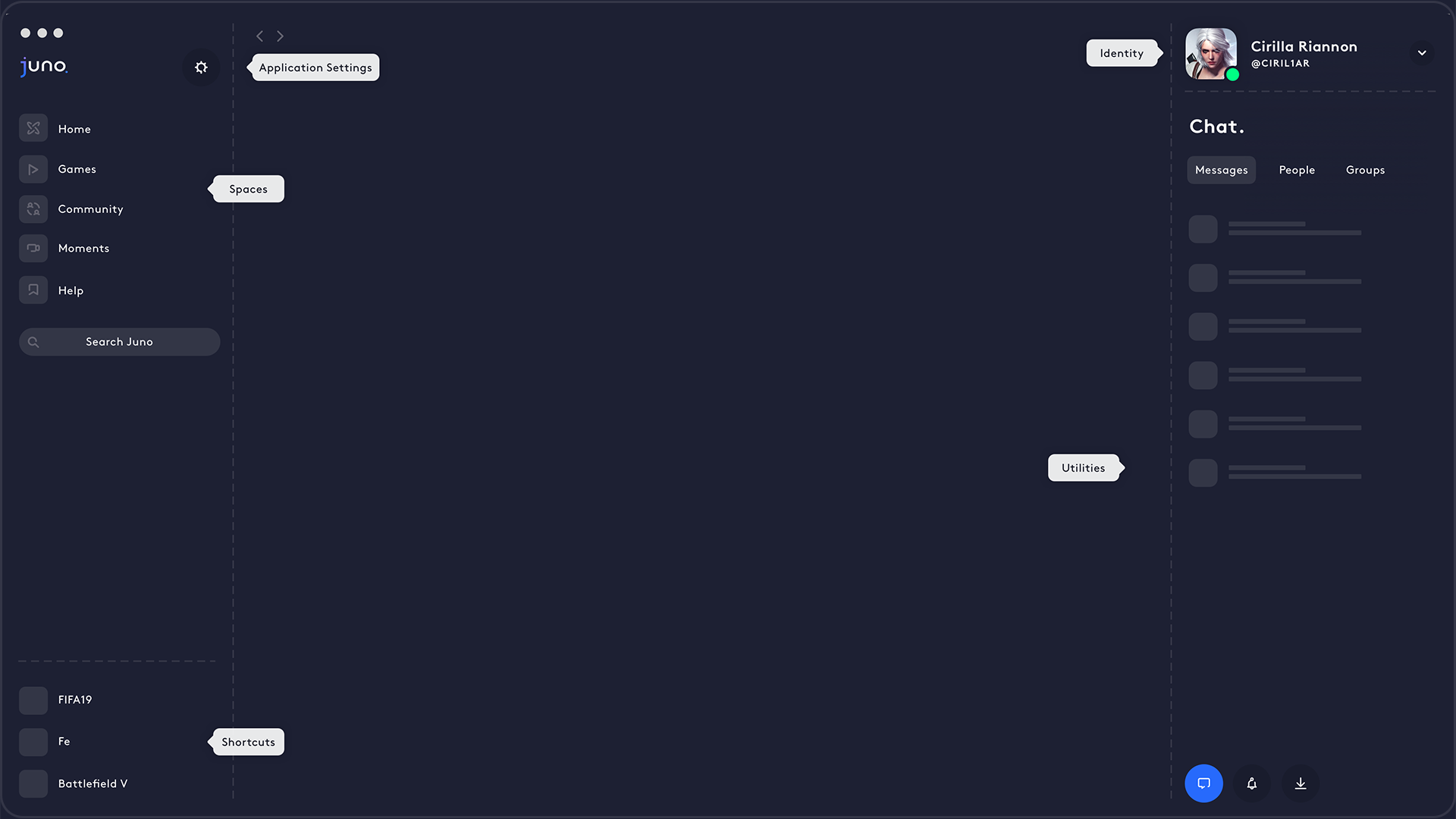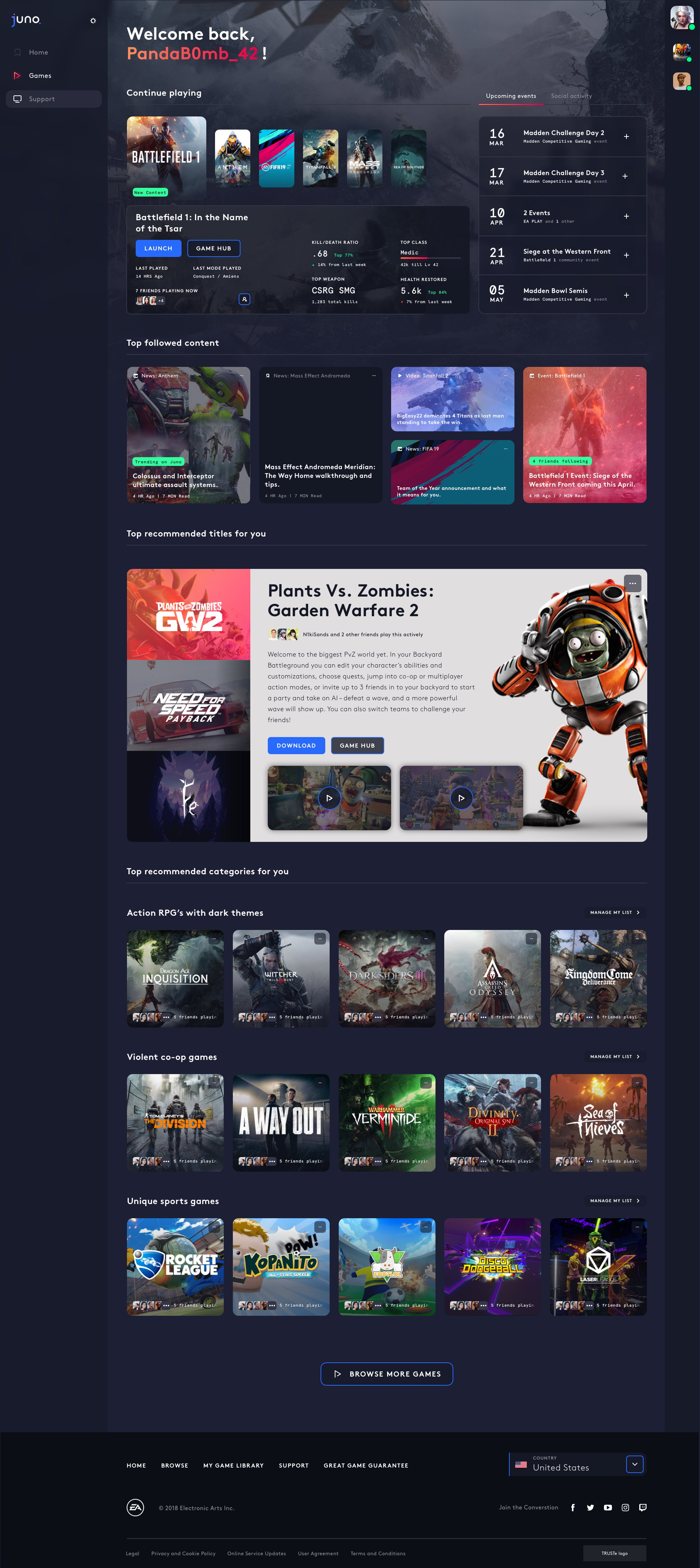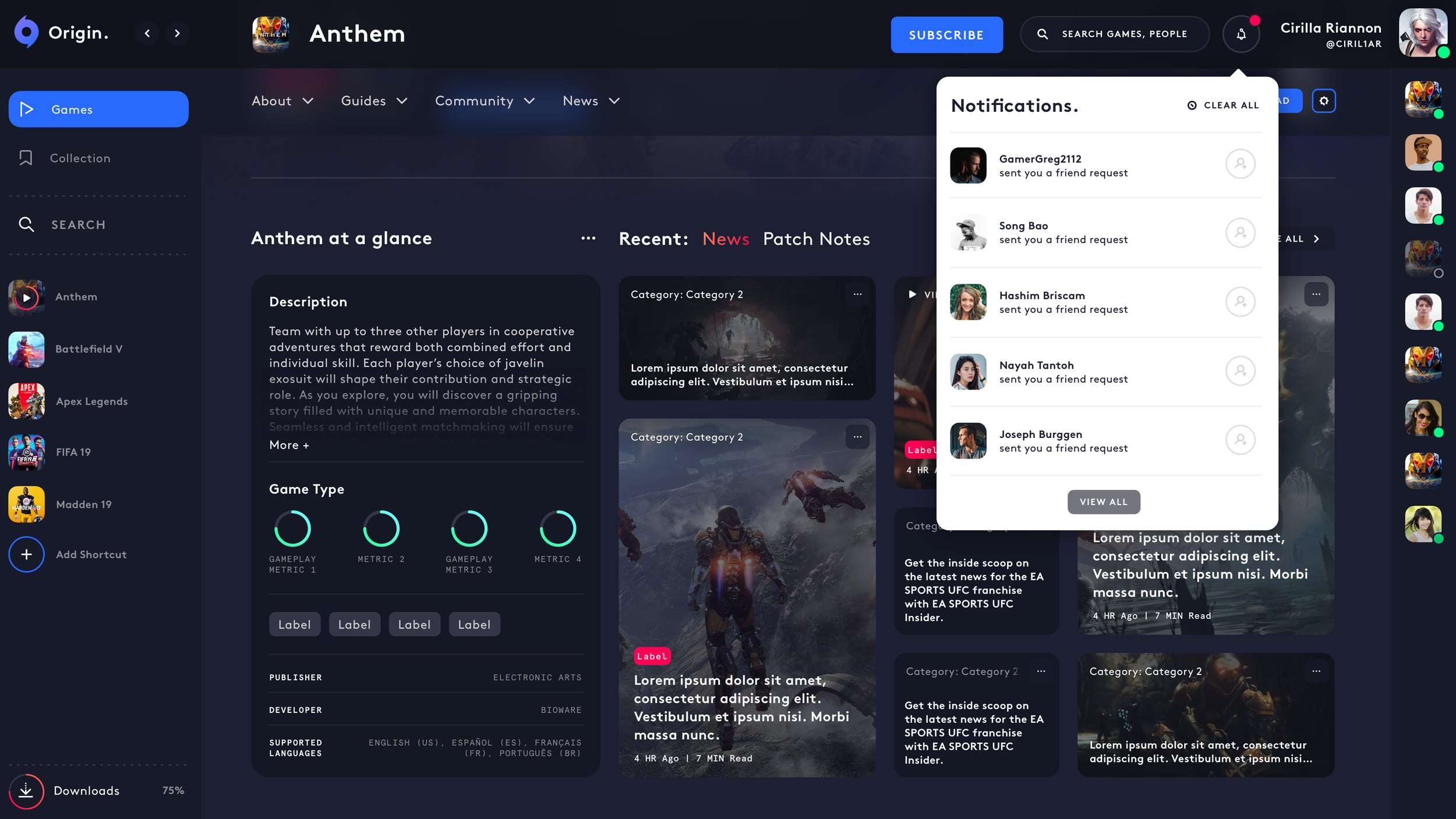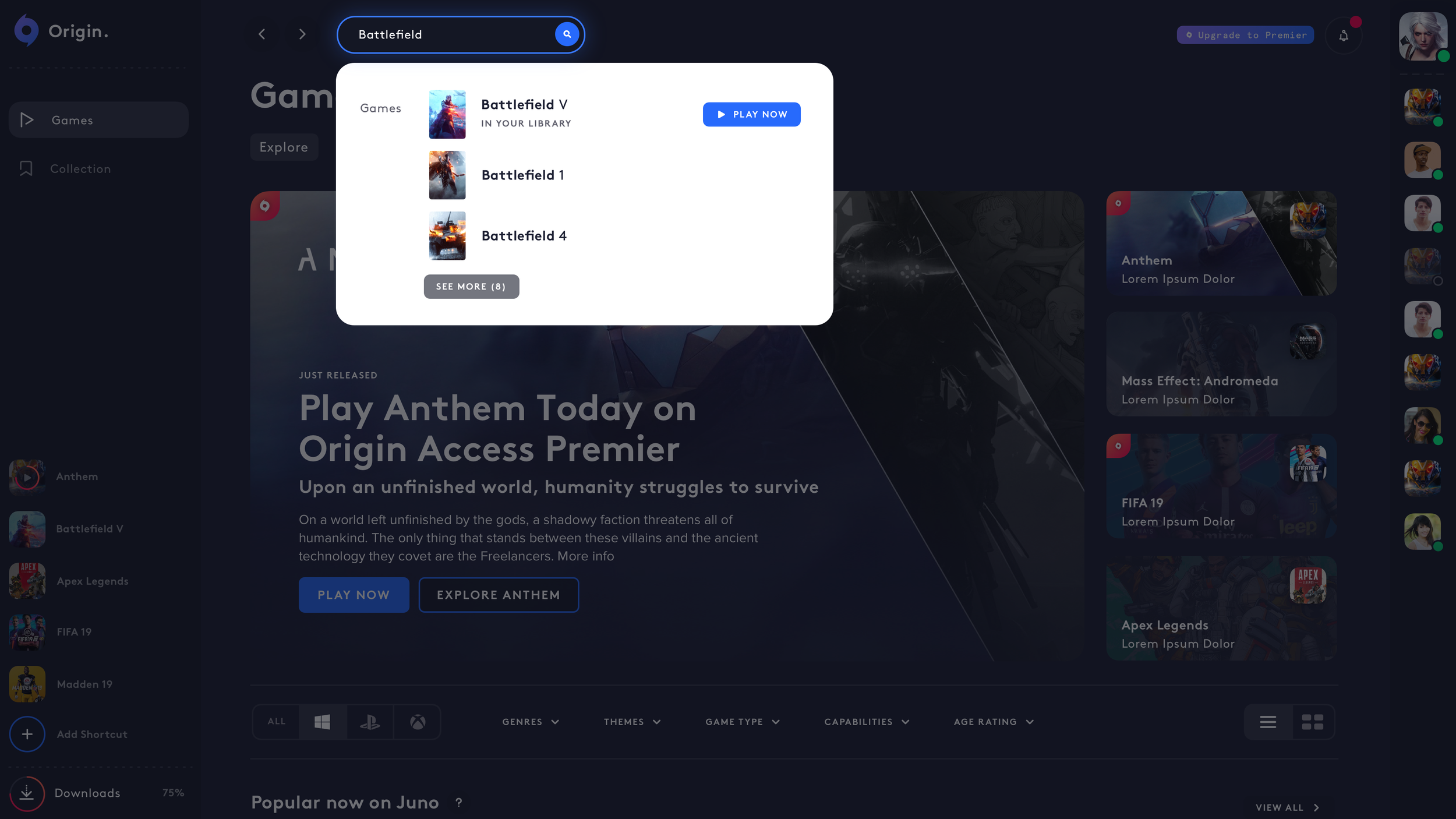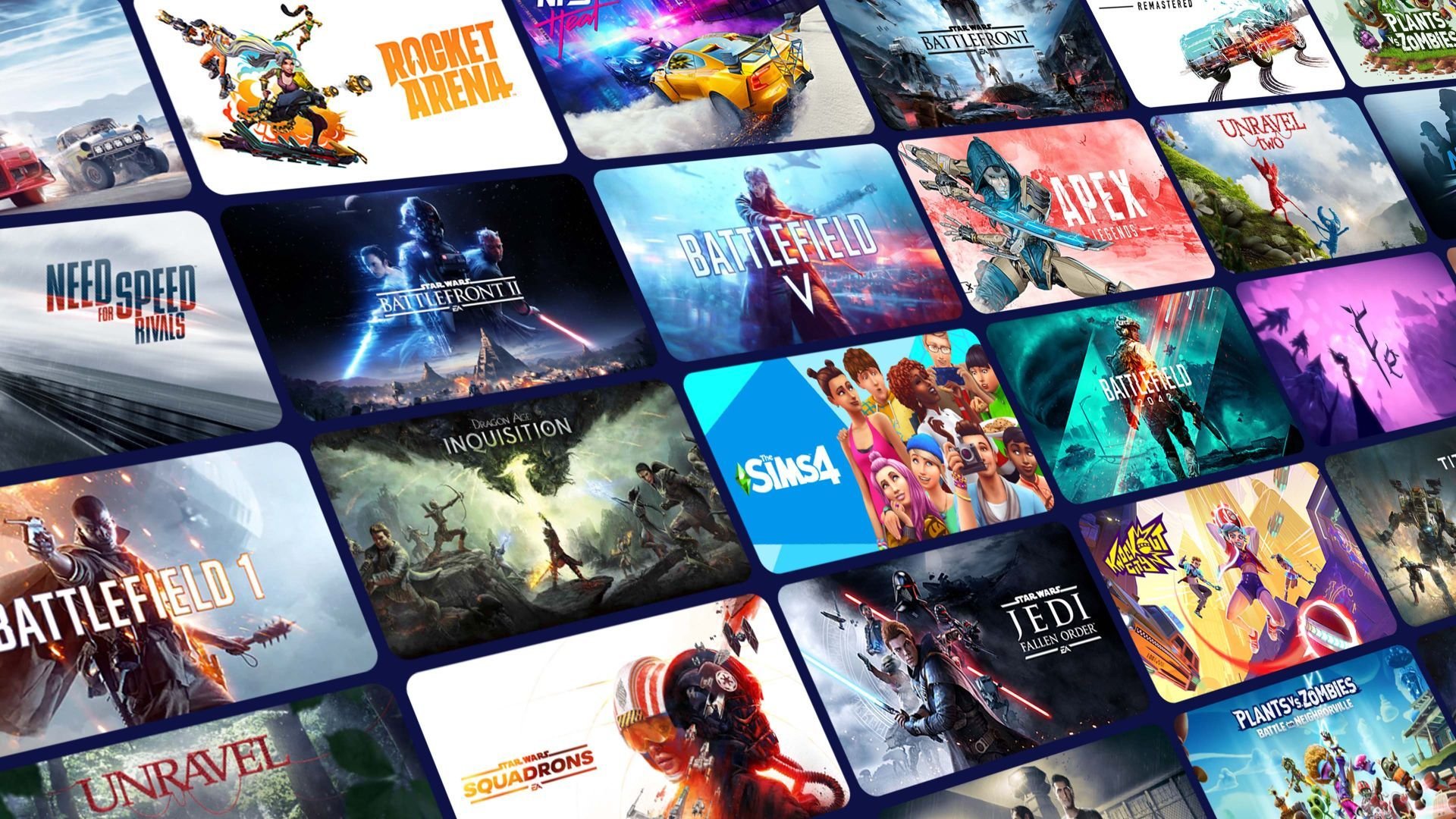
The EA Player Network
Reimagining EA’s digital platform and user-base as a connected ecosystem.
“The Network is the Product”
For the past 2 decades, EA’s business model had been based around building and publishing AAA games, then marketing them to gamers as one off à la carte purchases. This worked great, but over time created siloed user bases, duplicated efforts across game teams and created incentives that favored the individual game teams rather than the company at large.
The concept of The Player Network was based on an observable shift in consumer behavior away from ownership and towards an access model, as well as the need to bridge users across games to foster more cross game discovery, and delivered via a multi-platform subscription based service.
The goal was to change the value proposition EA could provide gamers to buy into the network itself, rather than into one game, year over year.

Phase 1: The Pitch
Getting The Buy In
I was brought into this project at the very inception, I worked closely with the VP of Gaming, CMO and senior directors to build out the pitch that would be presented to the C-Suite execs and the Board to gain support. I oversaw the narrative development and creative direction of the concept deck that showed the possible product experiences & business opportunities that could be unlocked.
This successfully gained board approval, and kicked off a large restructuring of our digital platform teams to begin executing on the vision.
Phase 2: Research Deepdive
Research & Analysis
After getting the green light on the concept, I kicked off a research deep dive with our UXR team to begin gathering insights we could use to further guide the process and identify the most pertinent challenges to solve. We dove into persona development, user needs, competitive analysis’ to get a really clear understanding of the landscape around gaming platforms and where we could differentiate ourselves.

Phase 3: Concept Development
Initial Concepts
To help up level the conversations around what the platform should do, I began working on conceptual screens that could paint a more accurate picture of how we could combine the aspects of our web discovery, editorial and social strategy.
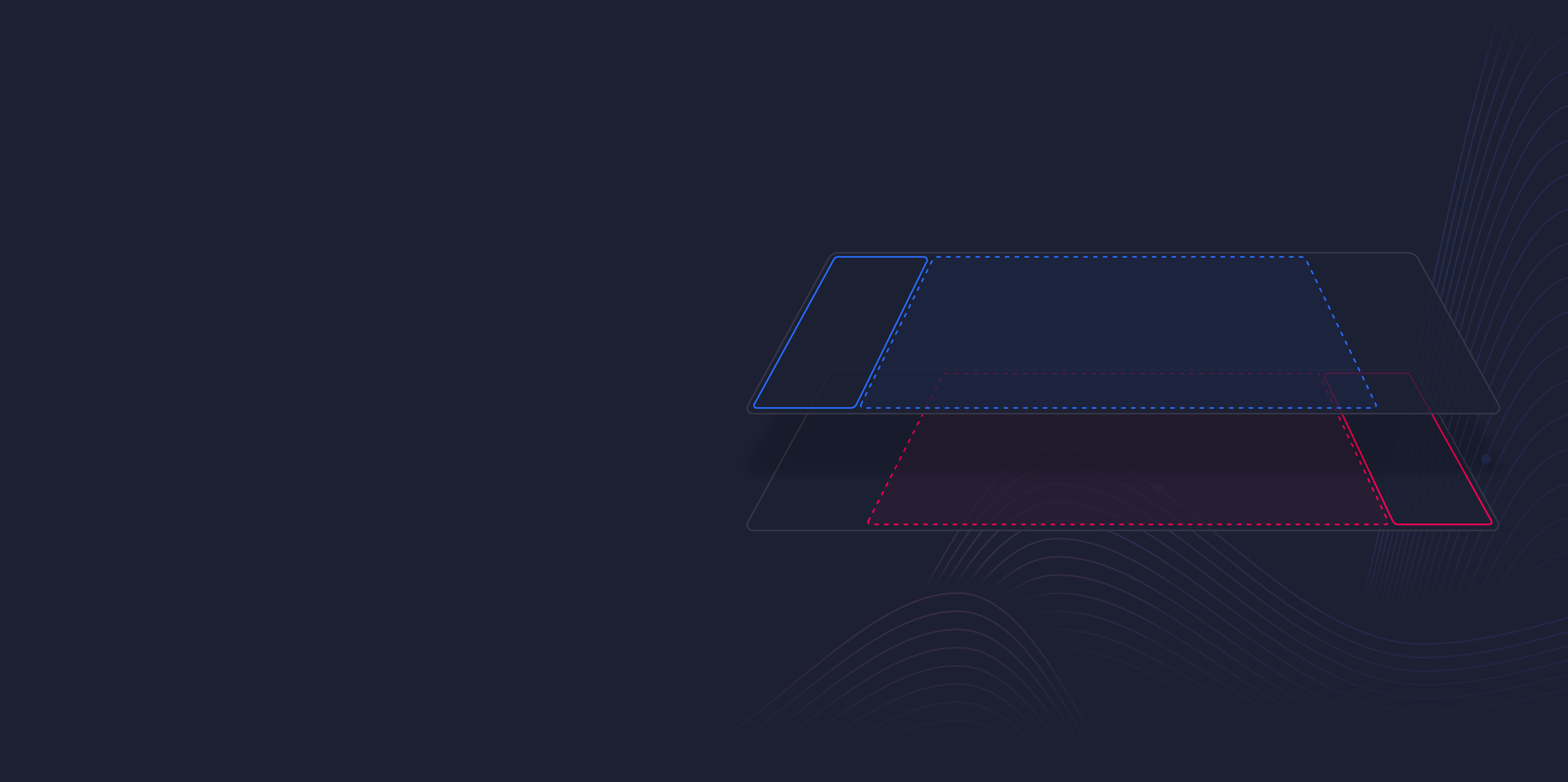
Phase 4: Pre-Production
Setting the App Foundation
With the focus on the PC Desktop application as the first priority, I was responsible for setting a foundation for the application’s UI structure / chrome.
I worked to create a clear set of regions within the UI that contained core navigation, utilities and content, and developed a multi-layered system for presenting dynamic content with seamless transitions as users navigated through the app.
A lot of time was also spent on adaptability rules to ensure the hierarchy was contextual to the users screen size.

Phase 5: Production
Going deep on Discovery
As the scope of the project grew, I took on the role of Design Director for the Discovery Pillar. Our role was to create user pathways into content from various parts of the app. The philosophy was built around creating a model of each user’s gaming motivations and building a portfolio of games that fulfilled them. Then using algorithmic recommendations to either broaden the portfolio, or drive deeper engagement with existing titles in their portfolio such that we’re maximizing the value they get from each purchase over time.
Dashboard
Home is the primary landing surface, it’s a springboard into recently played games, upcoming events, engagement oriented content from the games the user is following and recommendations for new games available to purchase.
Browsing
The Games section contains the full catalogue of games available on the network. We paid special attention to creating uniform presentation across both 1st and 3rd party titles, labelling curated categories as well developing a scalable information architecture that could be easily traversed and filtered through.
Game Hub
The game hub was the canonical home for each game on the network. It was built around a stateful architecture so that regardless of the users relationship with the game i.e owner, non-owner, actively playing, churned etc, the content and actions would always be contextual to them.
Search
The Search utility allows users to find games, users, editorial and other types of content across the network. In hybrid subscription & ownership model, we needed to ensure there was clear indicators of what a users could launch or access to avoid dead ends or failed queries.
Phase 6: Launch
The Result
The EA Play App is now in Beta and can be downloaded. Eventually, this app will replace the Origin PC client, and active development on the Mobile and PS5/XBox versions is in progress.



